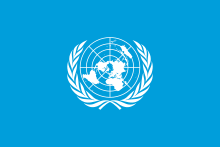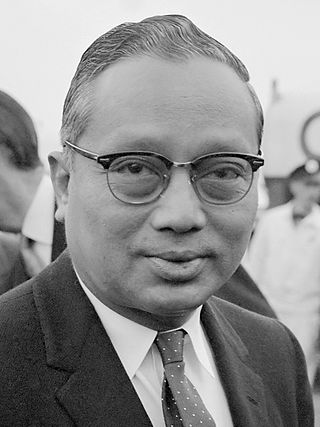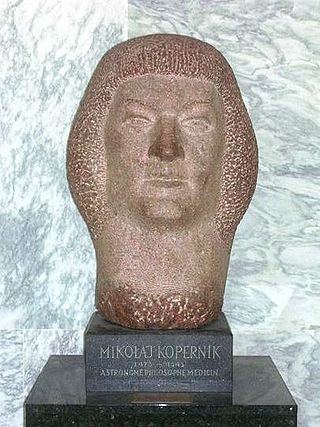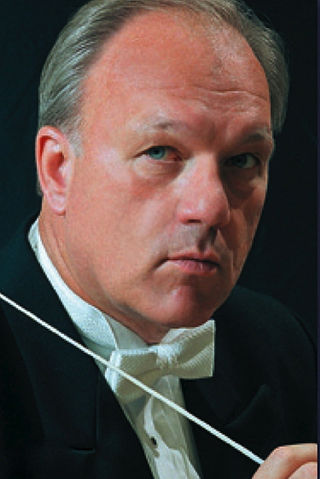 | |
| Lyrics | W. H. Auden, 1971 |
|---|---|
| Music | Pau Casals, 1971 |
| Audio sample | |
Instrumental version | |
The Hymn to the United Nations is an anthem composed to mark the 26th anniversary of the founding of the United Nations.
 | |
| Lyrics | W. H. Auden, 1971 |
|---|---|
| Music | Pau Casals, 1971 |
| Audio sample | |
Instrumental version | |
The Hymn to the United Nations is an anthem composed to mark the 26th anniversary of the founding of the United Nations.
On the request of then United Nations Secretary-General U Thant, a Hymn to the United Nations was performed on the occasion of its 26th anniversary, on 24 October 1971, by Pau Casals, the lyrics to which were penned by the poet W. H. Auden. [1] [2]
Thant first approached Casals, who was a personal friend, looking to create a hymn to peace and hoping for the song to be based on the preamble of the Charter of the United Nations. Thant later commissioned Auden to write the poem after Casals requested one to set to music. Auden completed his work in three days time. The finished work, scored for chorus and orchestra, takes approximately seven minutes to play. However, there were never any plans to adopt the song as the organization's official anthem. [3] [4]
| English |
|---|
Eagerly, musician, |
An anthem is a musical composition of celebration, usually used as a symbol for a distinct group, particularly the national anthems of countries. Originally, and in music theory and religious contexts, it also refers more particularly to short sacred choral work and still more particularly to a specific form of liturgical music. In this sense, its use began c. 1550 in English-speaking churches; it uses English language words, in contrast to the originally Roman Catholic 'motet' which sets a Latin text.

"And did those feet in ancient time" is a poem by William Blake from the preface to his epic Milton: A Poem in Two Books, one of a collection of writings known as the Prophetic Books. The date of 1804 on the title page is probably when the plates were begun, but the poem was printed c. 1808. Today it is best known as the hymn "Jerusalem", with music written by Sir Hubert Parry in 1916. The famous orchestration was written by Sir Edward Elgar. It is not to be confused with another poem, much longer and larger in scope and also by Blake, called Jerusalem The Emanation of the Giant Albion.

"God Save the King" is the national anthem of the United Kingdom and the royal anthem of each of the British Crown Dependencies, one of two national anthems of New Zealand, and the royal anthem of most Commonwealth realms. The author of the tune is unknown and it may originate in plainchant, but an attribution to the composer John Bull has sometimes been made.

"Poland Is Not Yet Lost", also known as the "Dąbrowski's Mazurka", and the "Song of the Polish Legions in Italy", is the national anthem of Poland.

The United Nations (UN) is a diplomatic and political international organization whose stated purposes are to maintain international peace and security, develop friendly relations among nations, achieve international cooperation, and serve as a centre for harmonizing the actions of nations. It is the world's largest international organization. The UN is headquartered in New York City, and the UN has other offices in Geneva, Nairobi, Vienna, and The Hague, where the International Court of Justice is headquartered at the Peace Palace.

The United Nations University (UNU) is the think tank and academic arm of the United Nations. Headquartered in Shibuya, Tokyo, Japan, with diplomatic status as a UN institution, its mission is to help resolve global issues related to human development and welfare through collaborative research and education.
A national anthem is a patriotic musical composition symbolizing and evoking eulogies of the history and traditions of a country or nation. The majority of national anthems are marches or hymns in style. American, Central Asian, and European nations tend towards more ornate and operatic pieces, while those in the Middle East, Oceania, Africa, and the Caribbean use a more simplistic fanfare. Some countries that are devolved into multiple constituent states have their own official musical compositions for them ; their constituencies' songs are sometimes referred to as national anthems even though they are not sovereign states.

Dag Hjalmar Agne Carl Hammarskjöld was a Swedish economist and diplomat who served as the second Secretary-General of the United Nations from April 1953 until his death in a plane crash in September 1961. As of 2023, he remains the youngest person to have held the post, having been only 47 years old when he was appointed. He was a son of Hjalmar Hammarskjöld, who served as Prime Minister of Sweden from 1914 to 1917.

The Japanese Peace Bell is a bell donated to the United Nations Headquarters in New York City via the United Nations Association of Japan in June 1954. It is a bonsho that is 60 centimeters in diameter, 1 meter in height, and 116 kg in weight. It was established by Chiyoji Nakagawa.
China is one of the members of the United Nations and is one of five permanent members of its Security Council. One of the victorious Allies of World War II, the Republic of China (ROC) joined the UN upon its founding in 1945. The subsequent resumption of the Chinese Civil War between the government of Republic of China and the rebel forces of the Chinese Communist Party, led to the latter's victory on the mainland and the establishment of the People's Republic of China (PRC) in 1949. Nearly all of Mainland China was soon under its control and the ROC government retreated to the island of Taiwan.

Thant, known honorifically as U Thant, was a Burmese diplomat and the third secretary-general of the United Nations from 1961 to 1971, the first non-Scandinavian to hold the position. He held the office for a record 10 years and one month.

The United Nations General Assembly Resolution 2758 was passed in response to the United Nations General Assembly Resolution 1668 that required any change in China's representation in the UN be determined by a two-thirds vote referring to Article 18 of the UN Charter. The resolution, passed on 25 October 1971, recognized the People's Republic of China as "the only legitimate representative of China to the United Nations" and removed "the representatives of Chiang Kai-shek" from the United Nations.
The United Nations General Assembly has granted observer status to international organizations, entities, and non-member states, to enable them to participate in the work of the United Nations General Assembly, though with limitations. The General Assembly determines the privileges it will grant to each observer, beyond those laid down in a 1986 Conference on treaties between states and international organizations. Exceptionally, the European Union (EU) was in 2011 granted the right to speak in debates, to submit proposals and amendments, the right of reply, to raise points of order and to circulate documents, etc. As of May 2011, the EU is the only international organization to hold these enhanced rights, which has been likened to the rights of full membership, short of the right to vote.
Thant Myint-U is a Burmese-American historian, writer, grandson of former United Nations Secretary-General U Thant, former UN official, and former special advisor to the president for the peace process. He has authored five books, including The River of Lost Footsteps: A Personal History of Burma and Where China Meets India: Burma and the New Crossroads of Asia. He founded the Yangon Heritage Trust in 2012 to protect colonial architecture and lobby for urban planning in the Burmese commercial capital of Yangon. He is currently a Distinguished Visiting Scholar at Christ's College, Cambridge and United Nations Special Adviser on Humanitarian Diplomacy.

The United Nations Art Collection is a collective group of artworks and historic objects donated as gifts to the United Nations by its member states, associations, or individuals. These artistic treasures and possessions, mostly in the form of “sculptures, paintings, tapestries and mosaics”, are representative “arts of nations” that are contained and exhibited within the confines of the United Nations Headquarters in New York City, United States, and other duty stations, making the UN and its international territories a "fine small museum".

David Eaton is an American composer and conductor who has been the music director of the New York City Symphony since 1985. He has also been an active composer and arranger, with 100 original compositions and over 900 arrangements and original songs to his credit. He has appeared as a guest conductor with orchestras in Asia, Canada, Israel, Europe, Central and South America, Russia, Ukraine and the United States. His compositions and arrangements have been performed at Carnegie Hall, Lincoln Center for the Performing Arts, the United Nations and by orchestras in the United States, Asia, Israel, South America and Europe. He also served at the conductor of the historic Goldman Band from 1998 to 2000 conducting the ensemble in concerts throughout the New York metropolitan area including performances at Lincoln Center for the Performing Arts. In 2022 he self-published his first book, What Music Tells Me: Beauty, Truth and Goodness and Our Cultural Inheritance.

An Earth anthem is a celebratory song or a musical composition that eulogizes, extols or exalts planet Earth.
United Nations Secretary-General selection is the process of selecting the next secretary-general of the United Nations. To be selected as secretary-general, a candidate must receive the votes of at least nine members of the United Nations Security Council, with no vetoes from permanent members. The secretary-general is then appointed by a majority vote of the United Nations General Assembly.

A United Nations Secretary-General selection was held in 1961 to replace Dag Hammarskjöld after he was killed in a plane crash. After initial Soviet attempts to replace the secretary-general with a troika, it was agreed that an acting secretary-general would be appointed for the remainder of Hammarskjöld's term. Within two weeks, U Thant of Burma emerged as the only candidate who was acceptable to both the Soviet Union and the United States. However, the superpowers spent another four weeks arguing over the number of assistant secretaries-general, before finally resolving their dispute by allowing Thant to decide for himself. Thant was then voted in unanimously for a term ending on 10 April 1963.

The Church Center for the United Nations is a private building founded, owned, and operated by the United Methodist Church as an interfaith space housing the offices of various religions as well as several non-governmental organizations. It is at 777 United Nations Plaza in New York City, across the street from, but not part of, the United Nations Headquarters complex.